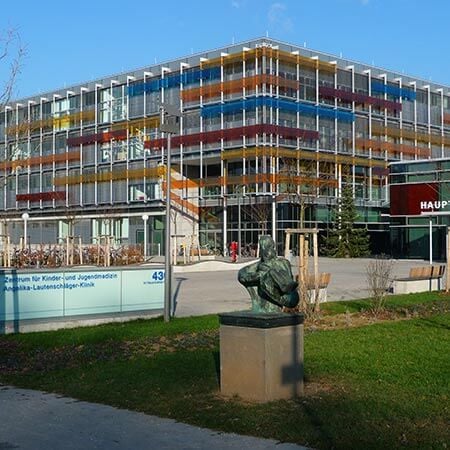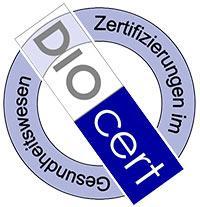Hairy cell leukemia is a rare neoplasm of mature B cells. Often, the pathology develops at the age of 55-60 years. Its feature is a slow progression, a long asymptomatic period of sharp spleen enlargement against the background of slightly swollen lymph nodes. Therapy results in long-term remission. However, the disease may recur after a while. In Germany, the treatment uses the latest drugs that provide good results even for recurrent hairy cell leukemia.
Content
- Treatment methods
- Standard drug treatment
- Relapse treatment
- Organization of treatment abroad
The disease is successfully treated with innovative pharmaceuticals. Sometimes doctors perform spleen removal surgery, but most patients do not need it.
The best clinics for the treatment of hairy cell leukemia are; University Hospital Mannheim, University Hospital Freiburg, and University Hospital Ulm.
You are welcome to leave your request on the Booking Health website and we will help you start treatment as soon as possible. The doctors will recommend the most suitable hospital for you and draw up a preliminary medical care program. The Booking Health managers will help you get a visa, book airline tickets and a hotel for you and your companion and provide interpreting services, and medical insurance. You will also have a personal medical coordinator for the entire treatment period.
Treatment methods
Hairy cell leukemia is a non-aggressive tumor. Patients do not require treatment immediately after diagnosis. Long-term monitoring for several years is possible before the disease begins to progress.
Indications for the start of therapy are as follows:
- hemoglobin levels are less than 11 g/dl;
- the number of platelets is less than 100 thousand/ml;
- the number of neutrophils is less than 1000/ml;
- malignant lymphocytosis is more than 5-2 /ml;
- increased susceptibility to infections;
- symptomatic splenomegaly and severe lymphadenopathy (enlarged spleen and swollen lymph nodes).
The main treatment methods are chemotherapy with cytostatic and immunotherapy. Some patients require a splenectomy (spleen removal surgery). In Germany, such surgical intervention was performed using a minimally invasive laparoscopic technique.
Standard drug treatment
The first breakthrough in treating hairy cell leukemia was the use of alpha-interferon drugs. It has responded effectively up to 80% (decrease or disappearance of tumors), that is stable in many patients.
The nucleoside analogs (Cladribine and Pentostatin) appeared in clinical practice. This was the second breakthrough in the treatment of the disease. These drugs cause long-term remission in almost all patients.
Later, drugs for targeted therapy appeared in the arsenal of doctors, which further improved the treatment outcomes.
Cladribine is used as a single five- or seven-day course during standard therapy. Pentostatin, given every two weeks until hematological parameters normalize and splenomegaly disappears. These two purine analogs have similar clinical activity and toxicity. The treatment is effective in 90% of patients. Due to the more convenient mode of administration, cladribine is frequently used.
Rituximab is often included in the treatment regimen as well. It is used when the standard scheme is not effective enough, as well as with minimal residual disease.
When the tumors have disappeared, cancer cells can still be detected by molecular and biological methods.
Relapse treatment
Although standard treatment is effective in most patients, the recurrence rate is 40-50%. After relapse, the response rate to repeated standard treatment decreases. In addition, immunity is often compromised due to high myelotoxicity, increasing the risk of infections and limiting the possibility of repeated treatment with purine analogs.
In recent years, new options for the treatment of such patients have emerged. Doctors use the following drugs:
- Anti-CD20 monoclonal antibodies;
- Anti-CD22 immunotoxins;
- BRAF inhibitors;
- MEK inhibitors;
- Tyrosine Kinase inhibitors.
Some of these drugs have already become part of standard therapy included in the protocols. Others are in the research phase, but they have shown good results and are expected to be approved for clinical use soon.
The repeated treatment regimen depends on how long the remission lasted. If the remission lasted more than 5 years, then it is possible to repeat the same regimen of therapy, which allowed to achieve a good response in the initial treatment. In the case of recurrence after 2-5 years, the standard procedure is the use of purine analogs in combination with an anti-CD20 monoclonal antibody.
The prognosis is less favorable if the relapse occurs less than 2 years later. In such a case, drugs of other pharmacological groups are used including those not yet part of the standard treatment and are undergoing clinical trials. In addition, doctors can use old techniques that still work in many patients: splenectomy combined with Interferon-alpha and Rituximab.
Organization of treatment abroad
Foreign patients who plan to visit Germany for diagnostics and treatment can contact the international medical tourism operator Booking Health. The employees of the company have been working with patients from 75 countries for more than 12 years and have up-to-date information about the peculiarities of entering Germany and applying for treatment for each of them.
With the Booking Health company, you can immediately start hairy cell leukemia diagnostics and hairy cell leukemia treatment in Germany. You can find out the cost of different types of treatment in advance and compare the prices for medical services in clinics in Germany in their website. For instance, the cost of treatment with cytostatic drugs for hairy cell leukemia is between 7,100 EUR and 8,900 EUR. The company's doctors will select the most suitable clinic for you and organize all stages of the trip for treatment. With the Booking Health company, you entrust your health to world-famous specialists and receive treatment at the best price.
Authors:
This article was edited by medical experts, board-certified doctors Dr. Nadezhda Ivanisova, and Dr. Bohdan Mykhalniuk. For the treatment of the conditions referred to in the article, you must consult a doctor; the information in the article is not intended for self-medication!
Our editorial policy, which details our commitment to accuracy and transparency, is available here. Click this link to review our policies.
Sources:
European Society for Medical Oncology
Cancer Support Community



















